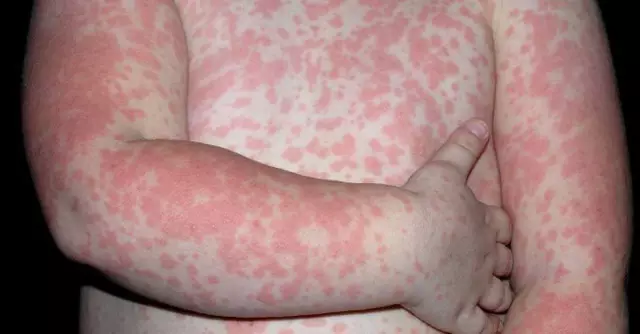- Author Curtis Blomfield [email protected].
- Public 2023-12-16 20:44.
- Last modified 2025-01-23 17:01.
Spring time is perhaps the most beautiful: at this time, nature begins to awaken, everything around comes to life and begins to bloom. But this flowering does not bring joy to some, but an exacerbation of hay fever (seasonal allergy to flowering), the symptoms and treatment of which we will consider in this article.

What is hay fever and how does it manifest?
The disorder used to be called "hay fever". It occurs due to an overly active reaction of the body to pollen particles, which settles on the nasal mucosa and causes irritation. Naturally, the immune system reacts to such an "invasion", mistaking pollen particles for a virus, as a result - irritation, sneezing and itching occur. An allergy to flowering, the symptoms of which are very similar to those of a cold, creates discomfort and prevents a person from leading an active and he althy lifestyle. Indicators of the manifestation of hay fever are:
- bouts of sneezing;
- tearing and redness of the eyes;
- nasal congestion and copiousrunny nose;
- shortness of breath;
- coughing and wheezing in the chest;
- sore throat;
- shortness of breath;
- skin rashes.
All of these signs may indicate that a person has a seasonal allergy to flowering. The symptoms of this disorder are very similar to those of the common cold, but there is one significant difference: with hay fever, there is no increase in body temperature, and the symptoms are most pronounced in dry and hot weather.

In people with allergies, such an exacerbation occurs regularly at the same time, it lasts about a month.
How to treat an allergy to flowering
To answer this question, the first thing to do is to visit a doctor: he will help determine what caused the allergy to flowering. Symptoms of pollinosis can be eliminated with the help of special preparations, as well as using a nasal spray. With inflammation and tearing of the eyes, drops come to the rescue, based on a substance such as Interferon. To prepare for spring, you can get an allergy vaccination in winter: it consists in the fact that for several months you will need to enter microscopic doses of the allergen in order to accustom the body to it. Some people are mistaken, believing that if the spring time has passed, then the allergy to flowering has disappeared. Treatment and prevention of pollinosis can relieve such serious diseases as bronchial asthma, anaphylactic shock, atopic dermatitis, allergic conjunctivitis and Quincke's edema.
Preventive measures against hay fever
To alleviate your condition and not aggravate it further, you should follow simple and useful recommendations:

- During the flowering period, try not to open windows or go outside in the evening when the air gets cooler.
- After coming home, you should immediately change clothes and preferably take a shower, as pollen particles can remain on the hair.
- You should be more careful about your home: street clothes should not be in the same room in which a person sleeps, potted flowers should not be planted on the windows or bouquets of dried plants should not be made.
- It is recommended to give up certain foods: milk, strawberries, carrots, pineapple, kiwi and other exotic fruits and their juices, nuts, seeds.






